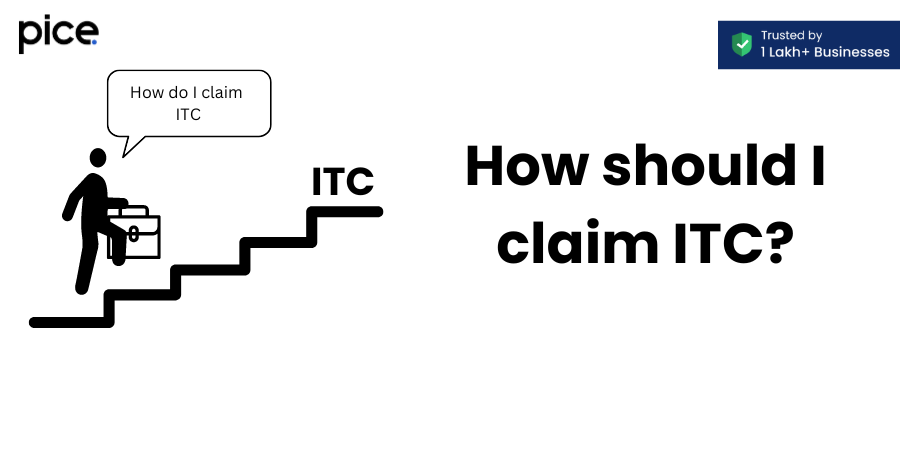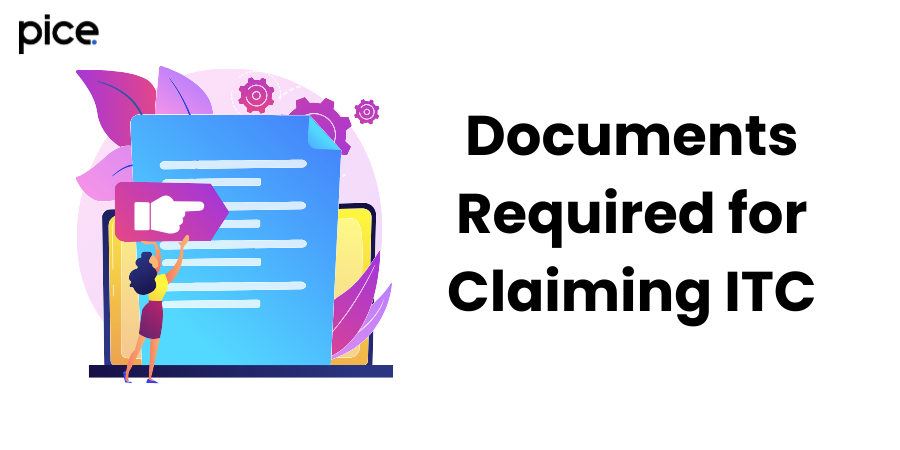Matching Input Tax Credit under GST
- 25 Aug 24
- 13 mins

Matching Input Tax Credit under GST
Key Takeaways
- Input Tax Credit (ITC) allows registered taxpayers to reduce their tax liability on outward supplies by claiming credit for taxes paid on purchases and expenses.
- Eligibility for ITC under GST requires possessing valid tax invoices, receiving the goods or services, ensuring the supplier has paid the tax, and timely filing of returns.
- Provisional ITC must be regularly reconciled with GSTR-2A/2B to avoid discrepancies and ensure that the claimed credits are legitimate and compliant with GST regulations.
- Matching ITC involves verifying the ITC claimed by the recipient against the supplier’s details in GSTR-1 to prevent fraudulent claims and ensure seamless tax credit flow.
- Proper documentation, including tax invoices, credit notes, purchase registers, and reconciliation with GSTR-2A/2B, is essential for substantiating ITC claims and maintaining compliance.
Understanding Input Tax Credit
Input Tax Credit (ITC) is a crucial component of the Goods and Services Tax (GST) system, which allows registered taxpayers to claim credit for the tax paid on their purchases and expenses. ITC helps in reducing the tax liability on the outward supply of goods or services, ensuring that the tax is only paid on the value addition at each stage of the supply chain. The primary purpose of ITC is to prevent the cascading effect of taxes, where tax is levied on tax, and to promote a seamless flow of credit in the economy.
For a registered person to claim ITC, certain conditions must be met. The taxpayer must possess a valid tax invoice or debit note issued by a registered supplier. The goods or services must have been received, and the supplier must have paid the tax to the government. Furthermore, the taxpayer must have filed a valid return in the prescribed format. ITC is reflected in the electronic credit ledger of the recipient, which can be utilized to offset the output tax liability.
Eligibility for Claiming ITC
Eligibility for claiming ITC under GST is determined by specific criteria that a registered taxpayer must satisfy. These criteria ensure that the claim of input tax is legitimate and complies with GST regulations.
Firstly, the taxpayer must be a registered person under GST. This includes regular taxpayers, casual taxpayers, and ISD (Input Service Distributors). The registration status must be active, and there should be no pending dues or compliance issues. The taxpayer must possess a valid tax invoice or debit note issued by a registered supplier. The invoice should contain all necessary details such as GSTIN, description of goods or services, and the amount of tax paid.
Additionally, the goods or services must have been received by the taxpayer. In cases where the supply is received in lots or installments, ITC can be claimed upon receipt of the last lot or installment. The supplier must have paid the tax to the government and filed their GST returns. This ensures that the tax credit claimed by the recipient is reflected in the government’s records.
Steps to Claim ITC

Claiming ITC involves a systematic process that ensures compliance with GST regulations and accurate reflection of tax credits. Here are the detailed steps to claim ITC:
- Obtain a Valid Tax Invoice: Ensure that you have a valid tax invoice or debit note issued by a registered supplier. The invoice should include all necessary details such as the supplier’s GSTIN, description of goods or services, quantity, value, and the amount of tax paid.
- Receive the Goods or Services: ITC can only be claimed after the goods or services have been received. In cases where supplies are received in lots or installments, ITC can be claimed upon receipt of the last lot or installment.
- Verify Supplier’s Tax Payment: Ensure that the supplier has paid the tax to the government. This can be verified by checking if the credit is reflected in GSTR-2A/2B, which shows the details of outward supplies uploaded by the suppliers.
- File Returns on Time: The registered person must file their GST returns on time, including GSTR-3B. This ensures that the ITC is claimed within the allowed tax period and is reflected in the electronic credit ledger.
- Maintain Proper Records: Keep detailed records of all purchase invoices, credit notes, and other relevant documents. Proper maintenance of the purchase register and reconciliation with the credits reflected in form GSTR-2B is essential.
- Reconcile ITC: Regularly reconcile the ITC claimed with the credits available in GSTR-2A/2B. This helps in identifying any discrepancies and addressing them promptly.
By following these steps, taxpayers can ensure that their ITC claims are accurate, compliant with GST regulations, and optimized for their tax liability.
Matching Input Tax Credit
Matching Input Tax Credit is a critical process under GST that ensures the ITC claimed by a registered person is accurate and corresponds to the tax paid by the supplier. This process involves comparing the ITC claimed in the taxpayer’s GST returns with the details of outward supplies furnished by the suppliers in their GSTR-1 filings.
The concept of matching forms is designed to verify the authenticity of ITC claims. The details of inward supplies recorded in the recipient’s GSTR-2A/2B must match the outward supply details provided by the supplier in their GSTR-1. Any mismatch could lead to discrepancies, resulting in the potential disallowance of ITC.
To ensure successful matching, taxpayers should regularly review their GSTR-2A/2B and reconcile it with their purchase register. This helps in identifying any discrepancies, such as missing invoices or incorrect entries, and taking corrective actions. Effective communication with suppliers is also essential to ensure that they report accurate and timely details of the supplies made.
Matching ITC helps in maintaining the integrity of the GST system by preventing fraudulent claims and ensuring that the tax credit flow is seamless and accurate. It also minimizes the risk of future disputes and penalties related to incorrect ITC claims.
Mismatch of Input Tax Credit
Mismatch of Input Tax Credit occurs when there is a discrepancy between the ITC claimed by the recipient and the details of outward supplies reported by the supplier. This mismatch can arise due to various reasons such as incorrect entries, missing invoices, or delays in filing returns by the supplier.
When a mismatch is detected, the taxpayer must take immediate steps to rectify the issue. The first step is to identify the source of the discrepancy by comparing the purchase register with GSTR-2A/2B. Communicating with the supplier to ensure that they have correctly reported the details in their GSTR-1 is crucial.
If the supplier has not uploaded the invoice or has made errors, they should be requested to correct their return in the subsequent tax period. The taxpayer should also ensure that they have correctly recorded the purchase invoices and claimed ITC as per the provisions of the GST law.
Failure to rectify mismatches can lead to the reversal of ITC and potential penalties. The GST portal may also issue notices to the taxpayer to explain the discrepancies and provide necessary documents to support their claims. Addressing mismatches promptly helps in maintaining compliance and avoiding any financial repercussions.
Acceptance of Input Tax Credit
Acceptance of Input Tax Credit is a process where the ITC claimed by the taxpayer is verified and approved by the GST authorities. Once the ITC details are matched and any discrepancies are resolved, the credit is accepted and reflected in the electronic credit ledger of the taxpayer.
To facilitate acceptance, taxpayers must ensure that they comply with all GST regulations and maintain accurate records. This includes possessing valid tax invoices, receiving the goods or services, ensuring that the supplier has paid the tax, and filing returns on time. The details of ITC claimed should match the information provided in Form GSTR-2B.
Upon successful reconciliation and verification, the accepted ITC can be utilized to offset the output tax liability. The electronic cash ledger is updated with the accepted ITC, which can then be used for future tax payments.
Ensuring the acceptance of ITC involves diligent record-keeping, regular reconciliation, and effective communication with suppliers. It also requires adherence to GST compliance requirements, including timely filing of returns and payment of taxes. Accepted ITC contributes to optimizing the tax liability and maintaining smooth business operations.
Reversal of Input Tax Credit
Reversal of Input Tax Credit occurs when the claimed ITC is found to be ineligible or incorrect. This can happen due to various reasons such as the supplier failing to pay the tax, goods or services not received, or the ITC being claimed on ineligible expenses.
When ITC needs to be reversed, the taxpayer must make the necessary adjustments in their GST returns. This involves reducing the ITC claimed in the electronic credit ledger and paying the equivalent amount of tax. The reversal should be reported in the GSTR-3B return for the relevant tax period.
It is crucial to maintain accurate records and ensure that the ITC claimed is legitimate to avoid the need for reversals. Regular reconciliation of ITC with the purchase register and Form GSTR-2B helps in identifying any discrepancies and addressing them promptly.
Reversal of ITC can lead to financial implications, including increased tax liability and potential interest or penalties. Therefore, taxpayers must be vigilant in claiming ITC and ensure compliance with GST regulations to avoid reversals.
ITC Reconciliation
ITC Reconciliation is a crucial process that involves comparing the ITC claimed by the taxpayer with the credits available in GSTR-2A/2B. This process ensures that the claimed ITC is accurate, legitimate, and compliant with GST regulations.
Reconciliation involves several steps, including reviewing the purchase register, comparing it with GSTR-2A/2B, and identifying any discrepancies. Effective communication with suppliers is essential to ensure that they report the correct details in their returns.
Regular reconciliation helps in maintaining accurate records and avoiding discrepancies that can lead to disallowed credits or penalties. It also ensures that the ITC claimed is optimized and utilized effectively to reduce the tax liability.
Taxpayers should conduct reconciliation on a regular basis, ideally monthly, to ensure that any issues are addressed promptly. This helps in maintaining compliance and avoiding any financial or legal repercussions related to incorrect ITC claims.
Documents Required for Claiming ITC

Claiming ITC requires maintaining accurate and comprehensive documentation to substantiate the claim. The key documents required include:
- Valid Tax Invoices: These are the primary documents that support the claim of ITC. The invoices should contain all necessary details such as the supplier’s GSTIN, description of goods or services, quantity, value, and the amount of tax paid.
- Debit Notes and Credit Notes: These documents are used to adjust the tax liability and must be maintained for accurate ITC claims.
- Purchase Register: A detailed record of all purchases, including the date of purchase, supplier details, invoice number, and the amount of ITC claimed.
- Form GSTR-2 : These forms provide a summary of the outward supplies furnished by the suppliers and are crucial for reconciling ITC (Input Tax Credit) claims.
- Electronic Credit Ledger: This ledger reflects the ITC claimed and utilized, and must be regularly updated and reconciled.
- Other Supporting Documents: Any other documents that support the claim of ITC, such as transport documents, bank statements, and contracts.
Maintaining these documents is essential for substantiating ITC claims and ensuring compliance with GST regulations. Accurate documentation helps in avoiding discrepancies and potential disputes with tax authorities.


















